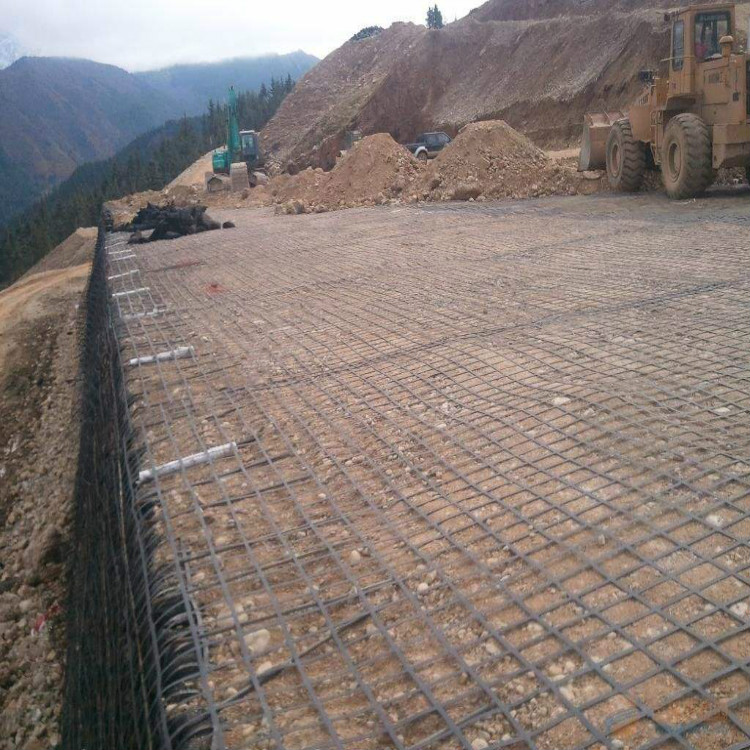The steel-plastic geogrid is priced based on its tensile strength (unit: KN). If you require other specifications, please choose "Other" and indicate your specifications in the remarks section.

1. The tensile strength of the steel-plastic geogrid is borne by high-strength steel wires woven in the warp and weft directions, producing a very high tensile modulus under low strain. The longitudinal and transverse ribs work together, fully exerting the geogrid’s interlocking effect on the soil.
2. The longitudinal and transverse ribs of the steel-plastic composite geogrid are woven with steel wires, and the outer wrapping layer is formed in one piece. The steel wires and the outer layer coordinate well, resulting in a very low elongation rate (no more than 3%). The main load-bearing unit of the steel-plastic composite geogrid is the steel wire, which exhibits extremely low creep.
3. During the production process, the plastic surface is treated and pressed with rough patterns to enhance the surface roughness of the geogrid and increase the friction coefficient between the steel-plastic composite geogrid and the soil.
4. The steel-plastic composite geogrid can have a width of up to 6 meters, achieving an efficient and economical reinforcement effect.
5. The high-density polyethylene used in the steel-plastic composite geogrid ensures that it is not affected by acid, alkali, salt solutions, or oils at room temperature. It is also resistant to water dissolution and microbial damage. Additionally, the polymer properties of polyethylene can withstand UV radiation, preventing aging. After the geogrid is subjected to load, the longitudinal and transverse ribs work together without causing damage or tearing at the junctions. In practical engineering, after the filler is compacted, it is protected from UV light and oxygen erosion, making it fully suitable for permanent construction projects.
Engineering Application Areas:Soft soil foundation reinforcement, retaining walls, and pavement crack prevention for roads, railways, bridge abutments, access roads, docks, dams, slag yards, and other areas.






 " />
" />